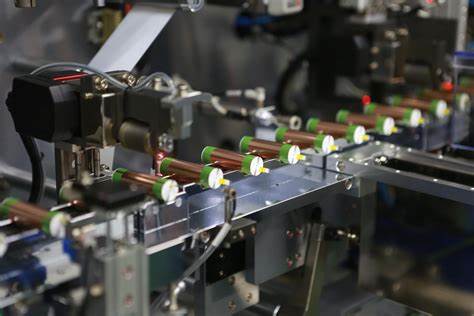Since the fourth quarter, the phthalic anhydride market has been hit by a "cold spell." After the traditional peak season of "Golden September and Silver October" failed to materialize, prices continued to decline. The current price of phthalic anhydride has dropped to 5,700 yuan per tonne, hitting a nearly four-year low. Faced with supply-demand imbalances that are difficult to resolve in the short term, industry insiders generally believe the market's low-price doldrums will persist.
Loose Supply Dashes Peak Season Hopes
This year, the phthalic anhydride market has overall continued a downward trend. The absence of a peak season and an even weaker off-season reflect the reality of industry supply-demand mismatch.
The traditional peak season of "Golden September and Silver October" proved disappointing. The market in September was lukewarm, with o-xylene-based PA prices in East China fluctuating within the range of 6,100-6,250 yuan per tonne, showing little overall volatility. In October, the market began a significant downward adjustment, with prices falling below 5,900 yuan, hitting a new low for 2025 and representing a drop of over a thousand yuan compared to the same period in 2024. Entering November, the market showed no signs of improvement, continuing its downward trend.
Increased supply is the core factor behind the weak PA market. "This year, the startup of the 50 kt/a o-xylene-based PA unit at Aekyung (Ningbo) brought China's o-xylene-based PA capacity to 1.63 million t/a, a 3% increase from 2024. The successive start-ups of the 50 kt/a naphthalene-based PA units at Shanxi Sanqiang and Weijiao Group increased China's naphthalene-based PA capacity to 1.72 million t/a, an 8.5% growth from 2024," said Qian Fang, an analyst at JLC. "The increased supply of phthalic anhydride has severely weakened producers' bargaining power. To maintain cash flow and market share, producers generally chose to sell at discounted prices, leading to a continuous downward shift in the price center." She expects the decline in PA prices in Q4 may narrow due to producers' stronger willingness to support prices, but the weak fundamentals will continue to limit any rebound momentum.
Profitability Reversal Stemming from Upstream Divergence
Phthalic anhydride is primarily divided into o-xylene-based and naphthalene-based, based on production process. A significant reversal in profitability between the two occurred in 2025.
Wang Sheng, an analyst at SCI99, stated that naphthalene-based PA previously held a stronger profitability position due to cost advantages. Although it experienced periodic losses since 2023, its profitability remained higher than o-xylene-based PA. Entering 2025, this situation changed quietly. After the startup of the Phase II aromatics complex at the Yulong Island integrated refining and chemical project and the resumption of the aromatics unit at Tianjin Petrochemical, increased o-xylene supply led to lower market prices, subsequently reducing cost pressure for o-xylene-based PA. Its position improved from a loss of 300-500 yuan per tonne to a break-even or slightly profitable state.
In contrast, naphthalene-based PA managed to hover near the break-even line early in the year but faced increasing cost pressure starting in Q2, with product losses exceeding 900 yuan per tonne. Although industrial naphthalene prices declined after Q4, leading to some profit recovery for naphthalene-based PA, it consistently failed to effectively break above the break-even line, remaining in an overall inverted cost-price situation. The industry operating rate dropped to a low level of 40%-50%.
Industry insiders generally believe the divergence in raw material trends will persist, and the profitability shift between the two processes is unlikely to reverse soon. The PA industry is entering a period of deep adjustment. Sustained low operating rates and the permanent exit of some outdated capacity may provide slight room for profit recovery, but a fundamental turnaround will take time.
Weak Demand: The Engine Has Stalled
The main downstream sectors for PA are plasticizers and unsaturated polyester resin (UPR). Since the beginning of the year, the slow recovery in terminal industries has led to phthalic anhydride procurement being maintained primarily through just-needed, small-lot purchases, with a noticeable lack of intention for large-scale restocking. The anticipated traditional peak season of "Golden September and Silver October" also failed to materialize, severely dampening market confidence.
Dioctyl phthalate (DOP), a major PA-derived plasticizer, faces challenges from increasing substitutes and continuously shrinking downstream demand. Amid environmental pressures and intensifying competition, the DOP market lacks vitality. Overall enterprise operating rates remain low. DOP prices followed raw materials downward, continuously refreshing yearly lows.
"Affected by the supply-demand mismatch, industry players maintain a cautious and wait-and-see attitude towards the DOP market, with fundamentals dominated by just-needed buying," said Wang Chunming, General Manager of Shandong Ruiyang Chemical Trade Co., Ltd. "Furthermore, the raw material 2-ethylhexanol is also in a downward trend, failing to provide effective support for DOP. It is expected that merchants will continue to sell at discounts."
Unsaturated polyester resin (UPR), another key downstream sector for PA, also saw its price center continuously decline due to stronger supply than demand, repeatedly hitting multi-year lows. The startup of a new UPR plant in Huanggang, Hubei, in late October provided limited support to upstream markets. The current operating rate in the UPR industry is around 36%. Industry insiders generally believe the UPR market still has some room to fall, operating rates are unlikely to improve, procurement of raw materials will remain sluggish, and it will be difficult to drive a recovery in the PA market.


